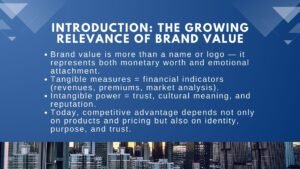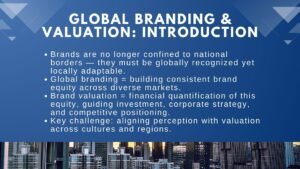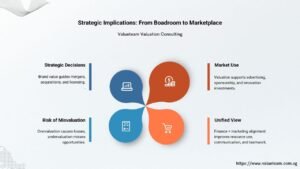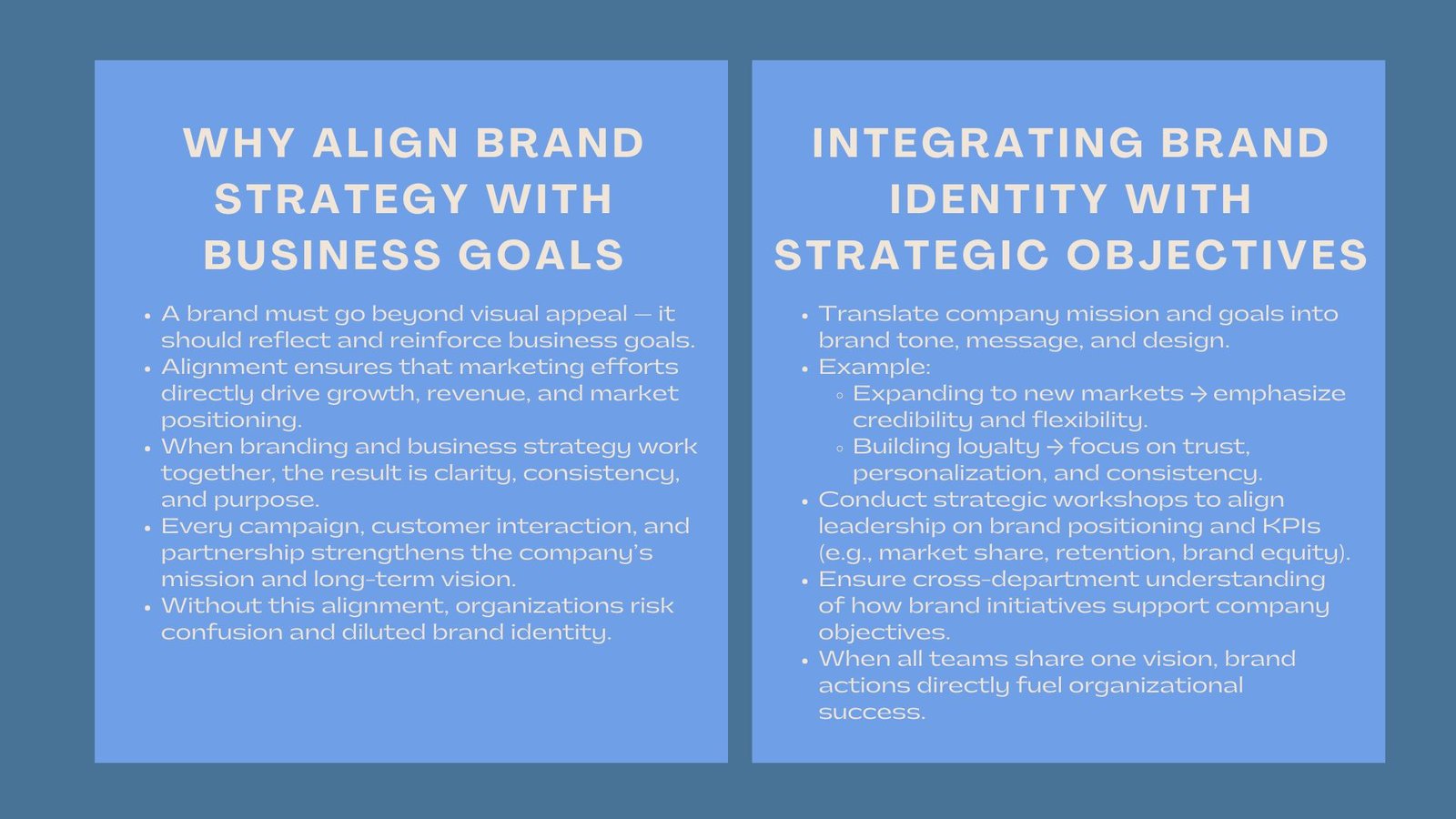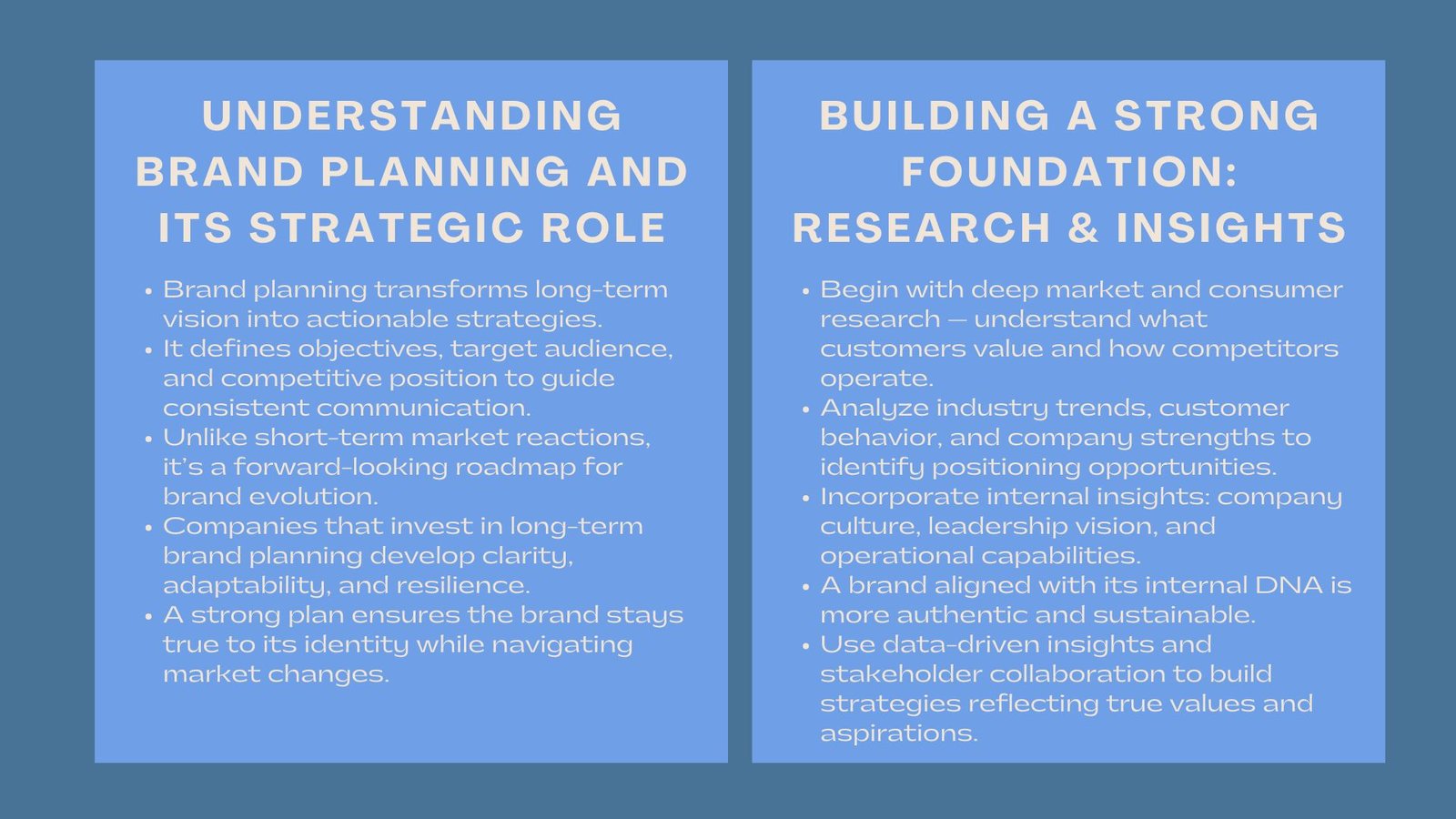
Professional Brand Development Training Singapore
The Role of Brand Planning in Long-Term Business Success
Introduction to Professional Brand Development Training Singapore
Brand planning is one of the processes that ties a company to its long goals. It entails setting clear objectives, target group, competitive analysis and plotting the road on a steady communication. Simply speaking, vision translates into execution at brand planning. It converts abstract desires into workable plans to continue the development of the business, making it an essential part of strategic brand planning for business growth.
Planning of brands is not synonymous with responding to the market trends, but it is planning ahead. Firms which invest in long term brand planning will be able to work with change much easier since they are working at a place of clarity. They are aware of themselves, their identity, and how they can represent their worth in the long run.
Building the Foundation: Research and Insights
Successful brand strategy commences with wisdom. This involves studying of consumer provisional, business climate and rivalry. Knowing what customers cherish and how the rival firms are competing will help the firms to know where to come in to make a difference. These lessons are used in all decisions, including how to message and design, what to price, and how to interact with the customer.
Other internal factors that are considered by the strategic brand planners include the company culture, strengths in operation, and the vision of the leaders. A brand which reflects the internal DNA is more true to itself and long lived. The data analysis and collaboration with the stakeholders allow organizations to create a brand strategy that should embody their values as well as their aspirations. This foundation supports long-term brand strategy development Singapore for organizations aiming to strengthen their position in both local and global markets.
What Brand Planning Is and Why It Matters
Brand planning is defined as a strategic process of determining the growth and communication of a brand as well as its relevance in the future. It can be defined as establishing clear goals, knowledge of target audiences, development of a rare and special value proposition, and establishing which activities are required to enhance brand equity. Simply, brand planning is the map that helps to coordinate marketing efforts and the goals of the business.
Brand planning tends to be long term and sustainable as compared to the short term marketing campaigns. It makes sure that all marketing campaigns, product choice and interaction with customers strengthens a unified brand message. In the absence of good planning, the brands are likely to become reactive instead of building lasting value as they strive to follow the trends.
An excellent brand strategy begins with research. This involves getting to know how the market looks like, the competitors and consumer behavior patterns. Insight-based planning assists the companies to identify areas of gap and opportunities be it the introduction of a new product, new market, or repositioning the brand. Research and information are the foundation of making informed decisions, minimize risk and make brand activities meaningful.
The second phase of brand planning would be establishing the positioning of the brand that is what it is, who it is serving and how it would set itself apart. This transparency enables the brand to create an exclusive image that is appealing to its customers. As an example, a brand that centers around innovation and simplicity such as Apple incorporates the message into all parts of its business such as product design and customer experience.
Implementation is also in brand planning. It involves the establishment of timelines, budgets and quantifiable goals so as to ensure that the progress can be monitored. A properly formulated plan leads marketing units, unites internal resources, and offers one growth direction when it is implemented correctly.
Probably most significantly, brand planning assists businesses in gaining resiliency. Markets dynamic, technologies dynamic and consumer expectations dynamic – yet a clear brand plan enables companies to change and remain authentic to their core. It generates a balance between flexibility and consistency.
In the current competitive business world where consumers have limitless options, brand planning is no more an option, but a necessity. It assists businesses in going beyond superficial marketing and creating real emotional resonance in that everything they do is geared towards creating a stronger and more trusted brand. When companies put resources into the considerate brand planning, they are not only selling goods, but they create long-term value and loyalty.
The Connection Between Brand Strategy and Business Longevity
The business longevity and brand strategy are closely connected. An effective, clear brand strategy achieves the immediate fame as well as preconditions the prolonged success and stability. The only businesses that survive are those that do not lose focus, but remain consistent and intelligently develop, which are all results of successful brand strategy.
Fundamentally speaking, brand strategy describes the why of a company, its mission, vision, and promise to its customers. These elements are essential when they are well structured and communicated to shape all business decisions, including product innovation and customer experience. This consistency of the brand purpose and business operations makes the growth of the company genuine and sustainable.
As an example, such brands as Coca-Cola and Nike have flourished over decades not only owing to their marketing budgets, but also owing to their ability to establish a strong emotional bond with their customers. The approach of coca-cola of marketing happiness and togetherness has been the same throughout the generations and Nike has held onto its theme of inspiration and empowerment, making it relevant despite the shifting trends. It is the system of remaining faithful to their brand nature that has enabled them to survive through adapting to new consumer demands.
There is also trust brought out by a clear brand strategy which is an important determinant of business survival. Customers would tend to be more supportive of brands that show a sense of consistency and reliability. This trust eventually leads to loyalty, advocacy and competition resistance. When the market dynamics vary, good brands will have the stable foundation of customers who will remain loyal and buy.
Furthermore, a properly formulated brand strategy serves as a guide in decision making. It assists organizations to focus on those initiatives they are interested in long term vision as opposed to opportunities with a short-term duration of success. This is the strategic field that makes the difference between the brand names that live through and those that die with the change of time.
Brand strategy also helps with the longevity internally, by bringing the teams together with a common purpose. Employees who appreciate the mission of the brand and believe in it will be the ambassadors providing customers with consistent experiences. This internal fit increases performance, innovation and company culture – which is essential in long term sustainability.
Last, brand strategy promotes flexibility. The markets change, and the needs of the consumers change, but a solid brand base enables firms to turn on the axis and retain their identity. Nowhere is this as true as in the case of LEGO, which has reinvented itself several times – its products went beyond being toys to entertainment – though it has preserved its main brand promise of creativity and imagination.
Concisely, a brand strategy that is properly implemented does not simply create a perception, it creates a sustainability. It provides businesses with a sense of direction, stability and flexibility required to survive in a volatile world. The firms that engage in brand strategy are not only building today but are also setting up their relevance even to posterity through corporate branding and marketing alignment training.
Sustaining Growth Through Continuous Planning
Brand planning is not a one time affair, it is a continuous process. The changes that are happening in businesses will necessitate changes in branding activities. The thorough analysis would keep the brand up to date and in line with the changing market demands. This will include measurement of such essential indications as recognition of the brand, client attitude, and competitiveness.
With brand planning remaining on the focus of the strategic discussions, organizations will see that all of their marketing initiatives will contribute to future success. A properly established brand strategy can be the guideline in the way to a consistent execution and quantifiable influence whether new markets or introducing new products.
Conclusion
Brand planning is much more than marketing, it is an element of strategy that leads to a long-lasting business success. A good brand strategy forms the foundation of the organization and offers a foundation during expansion and strength during transition.
Companies can be categorically straight, coherent and credible when they invest in a careful brand planning. Their messages are more effective, their operations are more in line with integrated purpose, and their effects are multiplied. Finally, brand planning does not involve the ability to envisage the future, rather, it involves getting ready to face it. It takes the uncertainty in the opportunity and assists organizations to create brands that stand the test of time.


